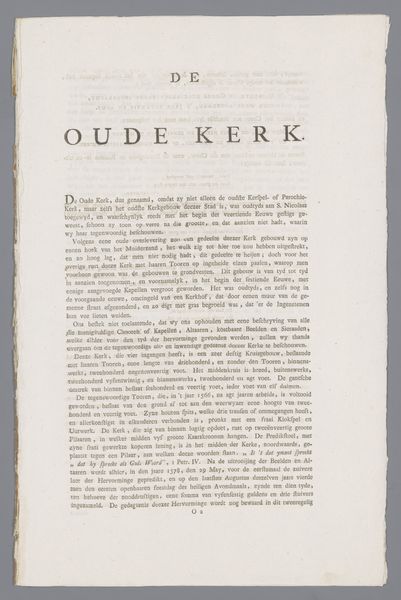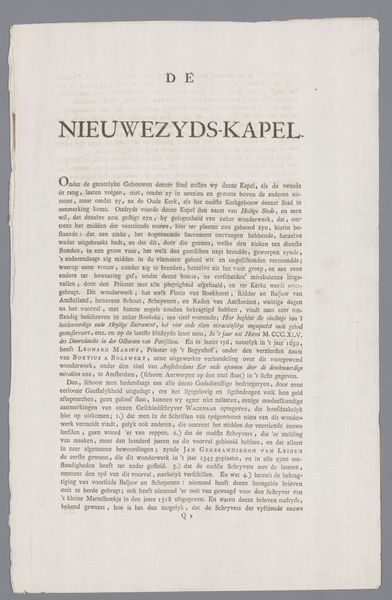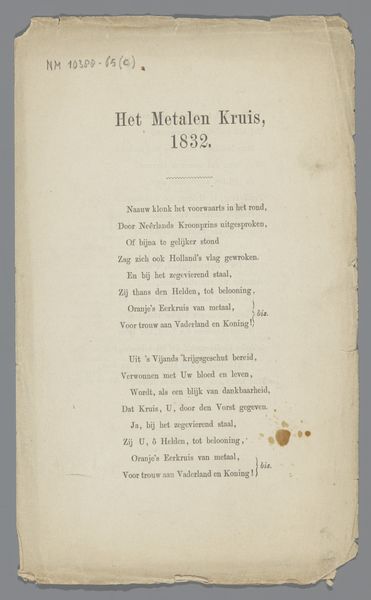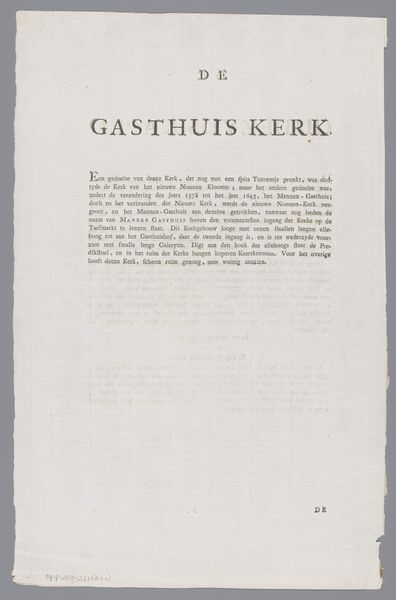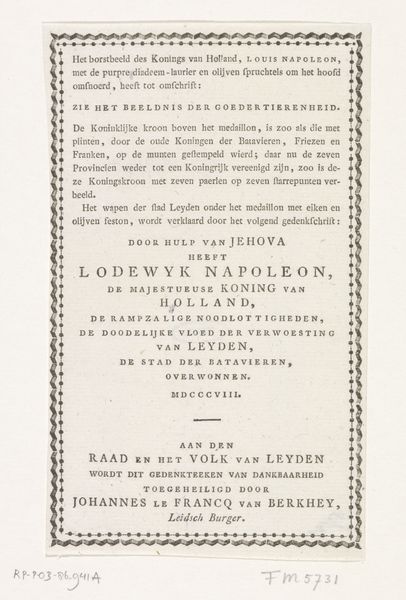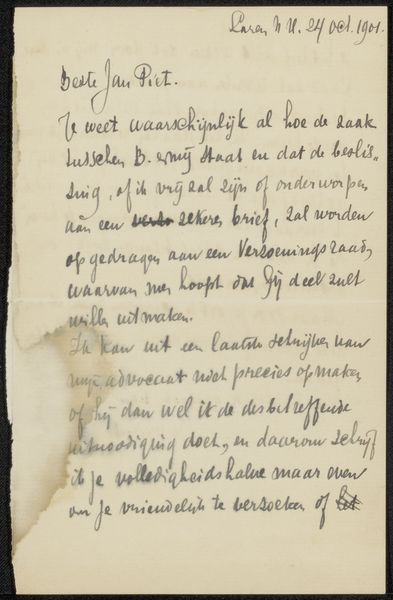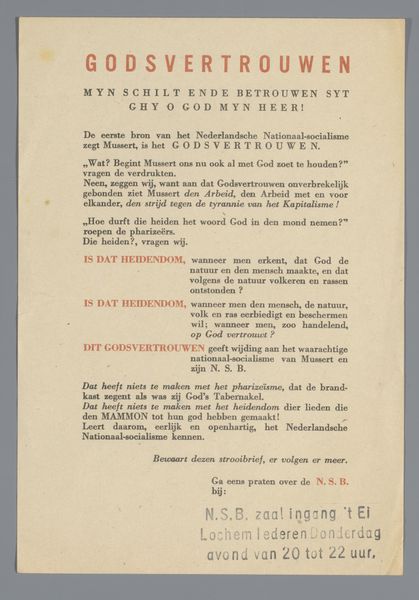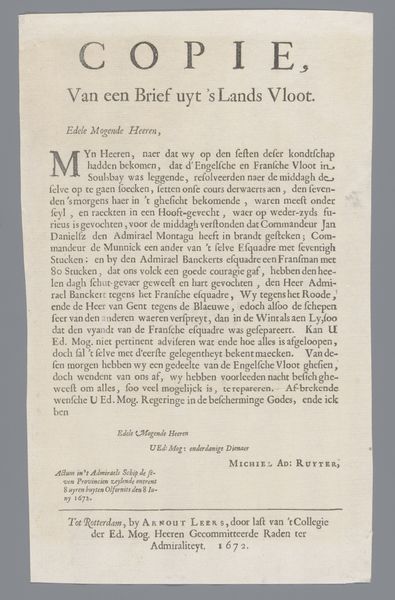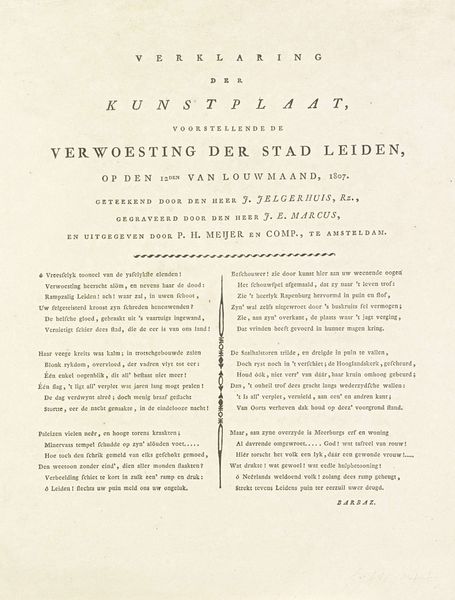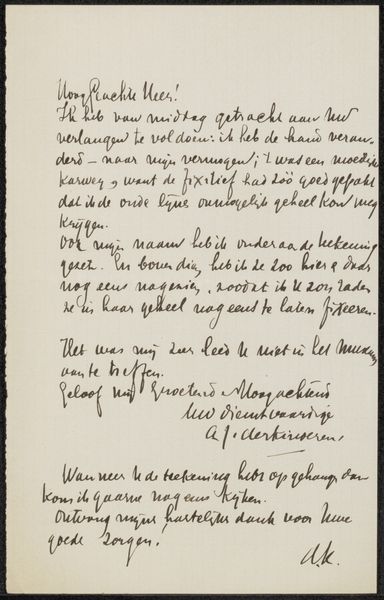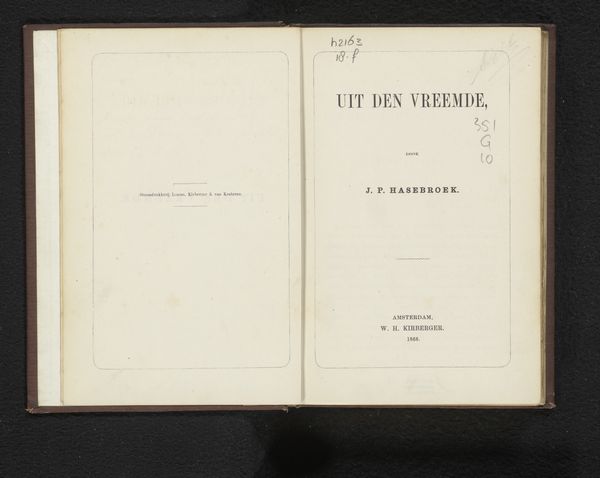
graphic-art, print, paper, typography
#
graphic-art
#
dutch-golden-age
# print
#
paper
#
typography
Dimensions: height 408 mm, width 266 mm
Copyright: Rijks Museum: Open Domain
Curator: Let's consider this print, "Beschrijving van de Nieuwe Kerk te Amsterdam," from 1783. Beyond just a depiction, it embodies a particular relationship with power, doesn't it? Editor: Indeed. It's an old print on paper describing the New Church of Amsterdam with descriptive text filling the page. The overall feel is very historical, almost like a document more than an artwork. What do you see in this piece? Curator: I see the construction of national identity. Note how the typography almost mimics the architectural grandeur it describes. The very act of documenting and disseminating information about this church—its history, its patrons, its rebuilding—plays a role in shaping a collective memory and solidifying Amsterdam’s, and by extension, the Netherlands' cultural narrative. Where does the power lie, would you say: in the Church itself, or in the story of it? Editor: That's an interesting point. The text describes benefactors and renovations…it feels almost like a subtle promotion, weaving a narrative of importance. It seems the power lies in controlling the narrative surrounding the Church, creating a sense of civic pride and historical continuity. It's interesting to consider that who funded and rebuilt is an important detail included within the print. Curator: Precisely! Consider who gets to write that history. Whose narratives are centered, and whose are marginalized or omitted entirely? It raises questions about representation, historical agency, and the role of institutions in shaping public memory, don’t you think? Editor: Definitely. I'm now seeing this piece less as a simple description and more as a deliberate act of constructing and reinforcing cultural values. Thank you! Curator: And thank you. This reminds us to critically examine not only what we see, but how and why it is presented to us.
Comments
No comments
Be the first to comment and join the conversation on the ultimate creative platform.
